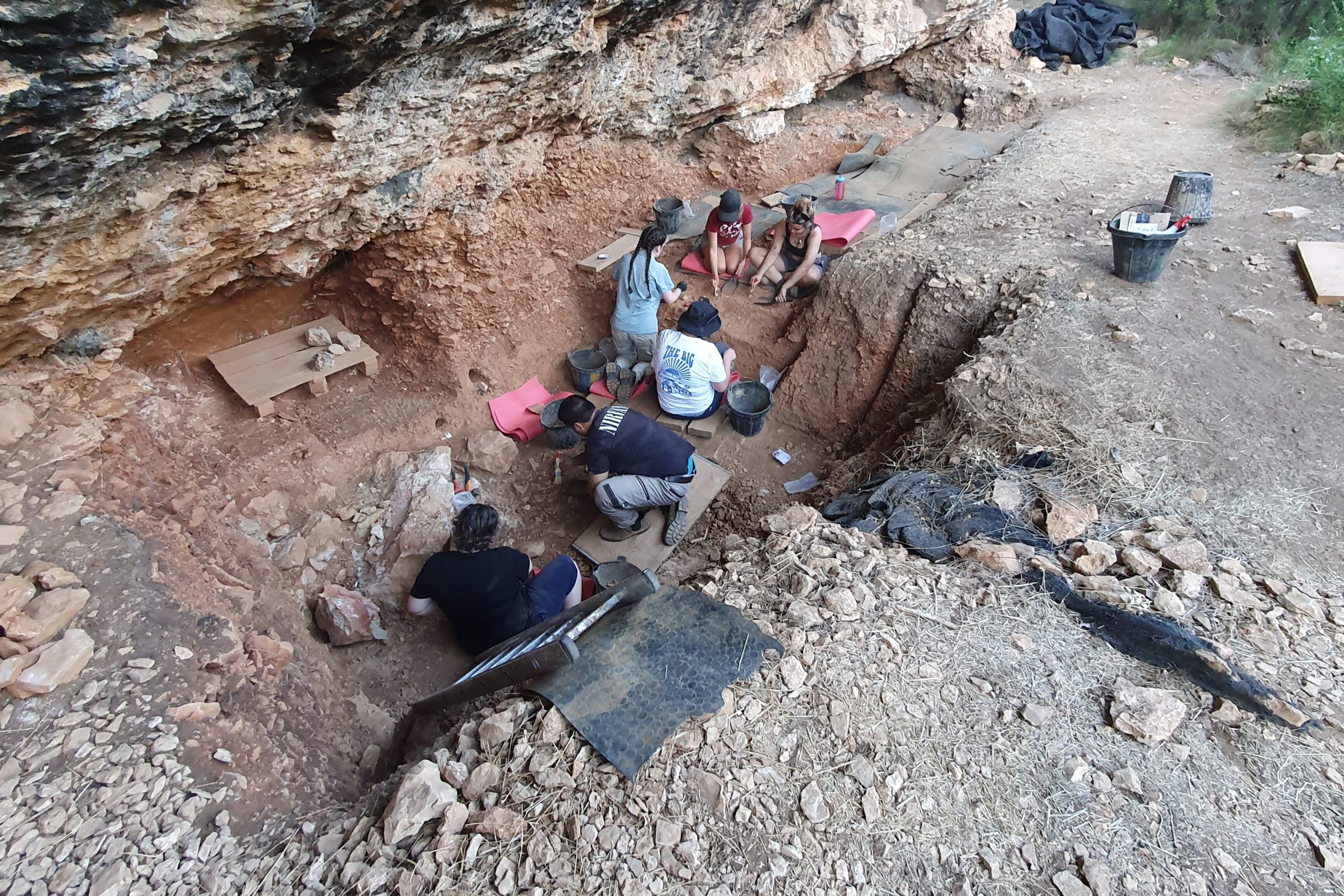A recently uncovered archaeological site has yielded a set of “surprising” insights into the lives of Neanderthals during a poorly-known period of their history.
The latest findings, published in the Journal of Archaeological Science, cast new light on how these archaic humans adapted to their environment.
Neanderthals (Homo neanderthalensis) are one of our closest extinct relatives. This species lived in Eurasia until their disappearance about 40,000 years ago. In certain regions and periods, they coexisted with anatomically modern humans—and even interbred with us.
Traditionally, Neanderthal behavior was considered to be less complex than that of our own species. But over the past decades, a growing body of evidence has challenged this view, with research indicating that aspects of Neanderthal behavior were comparable in complexity and diversity to prehistoric Homo sapiens.
Sofia Samper Carro/Australian National University
The latest study focuses on a site called Abric Pizarro—a rock shelter located at an altitude of around 2,200 feet in the foothills of the Pyrenees Mountains, which straddle the border of France and Spain. The site, first excavated more than a decade ago, preserves evidence of Neanderthal occupation from a period known as MIS 4, which lasted from around 71,000 to 57,000 years ago.
Little is known about this period of Neanderthal history, thanks in large part to the scarcity of sites across the European continent that are dated to this time. This stands in contrast to the “remarkable” number of sites dated to the preceding and subsequent periods—known as MIS 5 and MIS 3, respectively.
“The limited number of MIS 4 sites has been attributed to population shrinkage, as well as a contraction and shift in the range of suitable habitats exploited by Western European Neanderthal populations, although other factors, such as poor preservation of sites from this period should not be disregarded,” the authors wrote in the study.
For the study, the research team analyzed thousands of artifacts from Abric Pizarro, including stone tools, animal bones and other remains, yielding new insights into the lives of the Neanderthals who once lived at the site during MIS 4.
The researchers found that the Neanderthal who used the site were adept hunters, with a broad knowledge of the surrounding landscape, which they exploited efficiently. They also showed signs of resilience through harsh climatic conditions.
“Our surprising findings at Abric Pizarro show how adaptable Neanderthals were. The animal bones we have recovered indicate that they were successfully exploiting the surrounding fauna, hunting red deer, horses and bison, but also eating freshwater turtles and rabbits, which imply a degree of planning rarely considered for Neanderthals,” archaeologist and study lead author Sofia Samper Carro with the Australian National University said in a press release.
According to the authors, the results of the study challenge widespread beliefs that Neanderthals only hunted large animals, such as horses and rhinoceroses.
“Through the bones that we are finding, which display cut marks, we have direct proof that Neanderthals were capable of hunting small animals,” Samper Carro said. “The bones on this site are very well preserved, and we can see marks of how Neanderthals processed and butchered these animals.”
“Our analysis of the stone artifacts also demonstrates variability in the type of tools produced, indicating Neanderthals’ capability to exploit the available resources in the area.”
Understanding more about Neanderthal survival strategies could help to shed light on the mystery of how exactly these archaic humans were driven to extinction. Sites like Abric Pizarro from MIS 4 indicate that Neanderthals were thriving when modern humans had not yet arrived in the area.
“The unique site at Abric Pizarro gives a glimpse of Neanderthal behavior in a landscape they had been roaming for hundreds of thousands of years,” Samper Carro said.
“Neanderthals disappeared around 40,000 years ago. Suddenly, we modern humans appear in this region of the Pyrenees, and the Neanderthals disappear. But before that, Neanderthals had been living in Europe for almost 300,000 years. They clearly knew what they were doing. They knew the area and how to survive for a long time.”
“This is one of the most interesting things about this site, to have this unique information about when Neanderthals were alone and living in harsh conditions and how they thrived before modern humans appeared.”
Do you have a tip on a science story that Newsweek should be covering? Do you have a question about archaeology? Let us know via science@newsweek.com.
References
Carro, S. C. S., Bolivar, S. V., Barbera, J. P., Westbury, E., Connor, S., Allué, E., Benito-Calvo, A., Arnold, L. J., Demuro, M., Price, G. J., Martinez-Moreno, J., & Mora, R. (2024). Living on the edge: Abric Pizarro, a MIS 4 Neanderthal site in the lowermost foothills of the southeastern Pre-Pyrenees (Lleida, Iberian Peninsula). Journal of Archaeological Science, 169, 106038. https://doi.org/10.1016/j.jas.2024.106038
